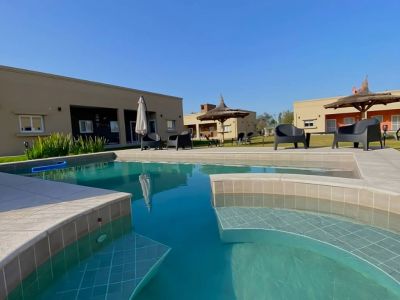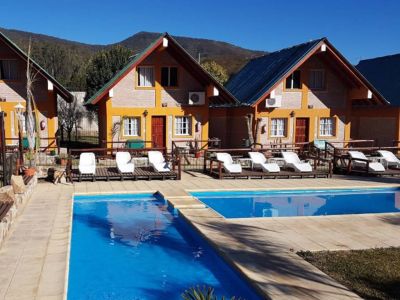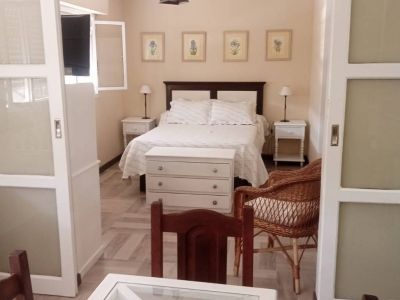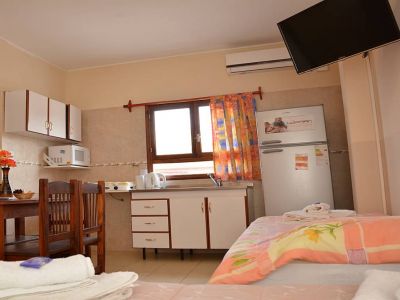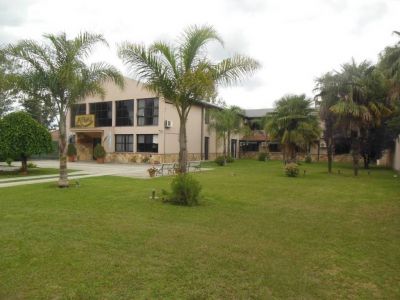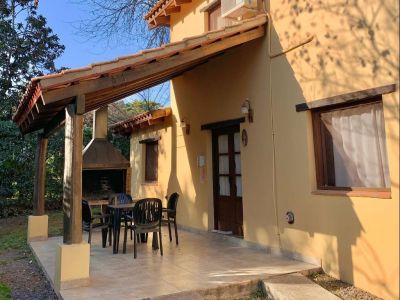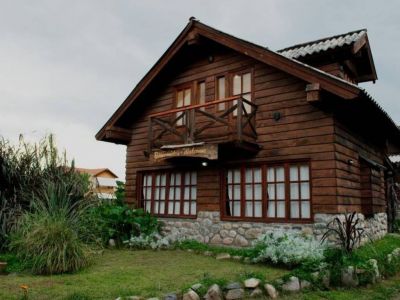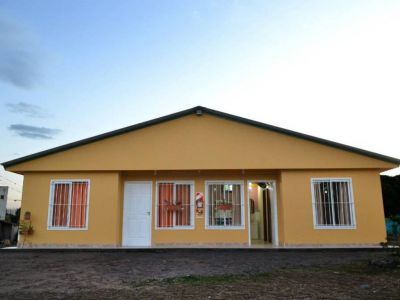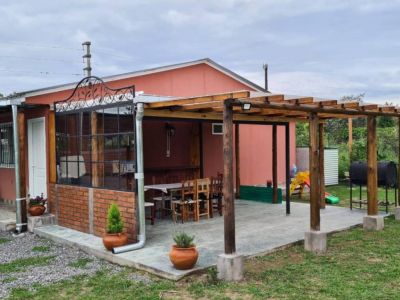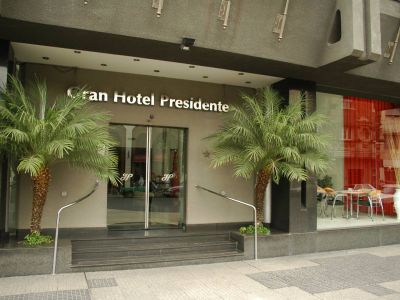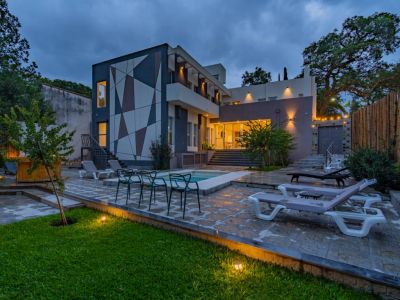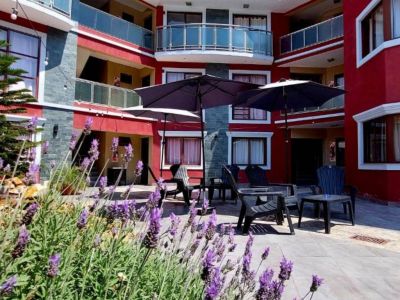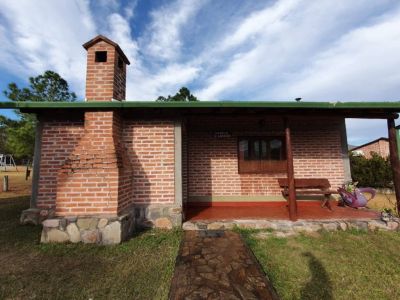Exciting and amusing, the safari to the clouds goes through the ravines and the Puna, some mythical nooks in the North. Not to be missed.
Have you already taken the train...? This is completely different. I had already been recommended to go on the safari to the clouds organized by MoviTrack Safaris & Turismo and my curiosity was increasing, especially after having a word with Frank Neumann, the owner. He and his wife, Heike, discovered the Argentinian North during their honeymoon, on an old Jeep, around 1991. So fascinated were the Germans with the puna scenery that they launched themselves into this tourist undertaking.
And there I was, on a Saturday morning at 6 o’clock, in their office, meeting point to start all the excursions. Feeling pretty sleepy, accompanied by a hot cup of coffee and cookies, I met the rest of the group that would take part in the safari.
Claudio, our guide, and Guillermo, the “movitrack” driver, were also introduced.
Frank had worked for Mercedes Benz for a long time and this was his own invention. It is a model ‘94 German truck from the same automotive firm, with some modifications. For example, the sliding roof, a small kitchenette and a toilet, among other alterations designed by Frank himself.
The striking vehicle was expecting us, completely equipped to plunge into the adventure of going through three northern spots one should not miss: the Train to the Clouds, the crossing of the Puna to the Large Salt Mines and the route to Purmamarca and its Mount of Seven Colors up the Lipán slope.
We crossed the dark and, at that hour, deserted capital city of Salta towards National Route 51. At around 7, we went through the last town in the fertile Valley of Lerma, Campo Quijano. Located 1500 mosl and known as the gate of the Andes, this district is the home of some railroad workers members of the Train to the Clouds team.
The history of branch line C14, which has become an emblem, connects the life of these towns in the heights with that of a French-American engineer: Richard Fointaine Maury. This visionary man, appointed by President Irigoyen, was in charge of the works, considered till this day as one of the most significant railroad constructions in the world.
This bold project, which defied the Andes Mountain Range, was started in May 10, 1921 at a rhythm unconceivable for those characteristics. Bearing the harshness of the land located more than 3,500 mosl and the inclemently snowy weather, the 1,300 creole and gringo workers labored with their very hands, no bulldozersexcavators, only shovels, pickaxes and explosives, to open up the way.
In order to make face to the bends and elevations of the mountain range, Maury and his team, of which Pastorini, Plister, Rauch, Rossi and Villar were part, had to sharpen their wits.
As they had to avoid slopes surpassing the 25 meters of height per kilometer and could not use racksbends exceeding a 120-meter radio, they designed a zig-zag and loops system that permitted them to gain height in short sections.
Guillermo stopped the “movi” to watch the first zig-zag, located at the El Alisal station, where the rails reach the 1,787 meters and leave towards Socompa, with 1,841 meters. As Claudio explained, in one same station, the train goes up forwards, backwards and forwards once again, forming a Z.
It is easy to visualize but extraordinary within that geography.
Stations of Oblivion
As the day broke, we got deep into the El Toro Ravine, bordering the river bearing the same name, 150 meters wide, almost dry during these months but with a high level in the summer as it is fed by rain. Still in half-darkness, we stopped to see the El Toro viaduct, located south of the ravine and built between 1921 and 1948, 224 meters long and 19 meters high. To the North, the La Polvorilla viaduct, which reached 4,200 meters, is well-known by pictures.
Passing by the El Candado estate, the vegetation started to change. The sub-Andean range was left behind and the cardons and ash-colored xerophilous plants became predominant.
I thought of the people who spent their days at the pace of these rails. The C14 did not escape the railroad history of the country, throwing several stations and small towns into oblivion.
An example would be Chorrillos, where the second zig-zag is located: a mandatory stop to wait for the Train to the Clouds and also for breakfast, which Guillermo and Claudio prepared with extreme care, while we wandered about to scare the cold weather away. We were not the only ones. Esteban and Teobaldo, from the C14 team, had already checked the conditions of the rails and were preparing coffee on an improvised fire.
Every Saturday, after having worked for the railroad for 20 years, Esteban waited for the train and dreamed of being able to retire because “work was hard and the salary was not enough”.
I saw him leaving the scene to share coffee with his fellow workers and I thought again about Maury and his team. In 1932, the famous La Polvorilla viaduct was inaugurated and Maury was not there to see his most challenging idea come true. Uriburu’s de facto administration had set him aside from the works in 1930.
They would have to wait until 1948 so that the Argentinian and Chilean rails would join, forming the only railroad link that remains till this day between the two countries and the market of the Pacific.
On the Threshold of the Puna
Before the train arrived, Claudio and Guillermo called us to get on the “movi”, now turned into a comfortable breakfast room. Music, hot coffee and milk and fresh croissants: the proposal could not be warmer. While Claudio was telling us the stories of the train and the hamlets it goes through, we heard the whistle.
We saw it coming crowded with tourists who waved from the windows. The train stopped at the Chorrillos station and the craftswomen took advantage of the moment to show their knitted works to the passengers. We were waiting in the company of Medialuna, the dog, loyal at breakfast time.
We saw that the train moved back in order to get into the zig-zag and Claudio told us that it was time to follow him. With Guillermo, who was ready at the wheel, they had slid the “movi” roof so that we could stand on the seats and thus enjoy the safari to the utmost.
We followed the rails route parallel to the formation, exchanging greetings, photo and film shots. Just Claudio had anticipated, the most exciting and amusing moment came when we passed underneath the train in a bridge. The tour did not lack thrills.
Afterwards, little by little, we lost sight of the train and continued our way along National Route 51. We saw the Our Lady of the Valley Chapel and, in the distance, the colored Mount Gólgota, 2,800 meters high, and then went through El Alfarcito, the last town in the El Toro ravine.
Our next stop would be Santa Rosa de Tastil, in the Las Cuevas ravine. What today is a small spot used to be the center of the culture of Atacama during the pre-Hispanic period.
We got off in front of the church and walked along the main street, where the female weavers improvise their stands to the Archeological Museum. In a small room, guides Elsa and Luis showed us petroglyphs found in the archeological site called El Duraznito with representations of camelidae and human figures, especially the representation of the dancer. Among other treasures, the museum has an interesting display of stones with a great concentration of iron which, when hit, sound bells. An old chiming, which locks the past of this important pre-Hispanic settlement, was declared National Historical Monument in 1997.






